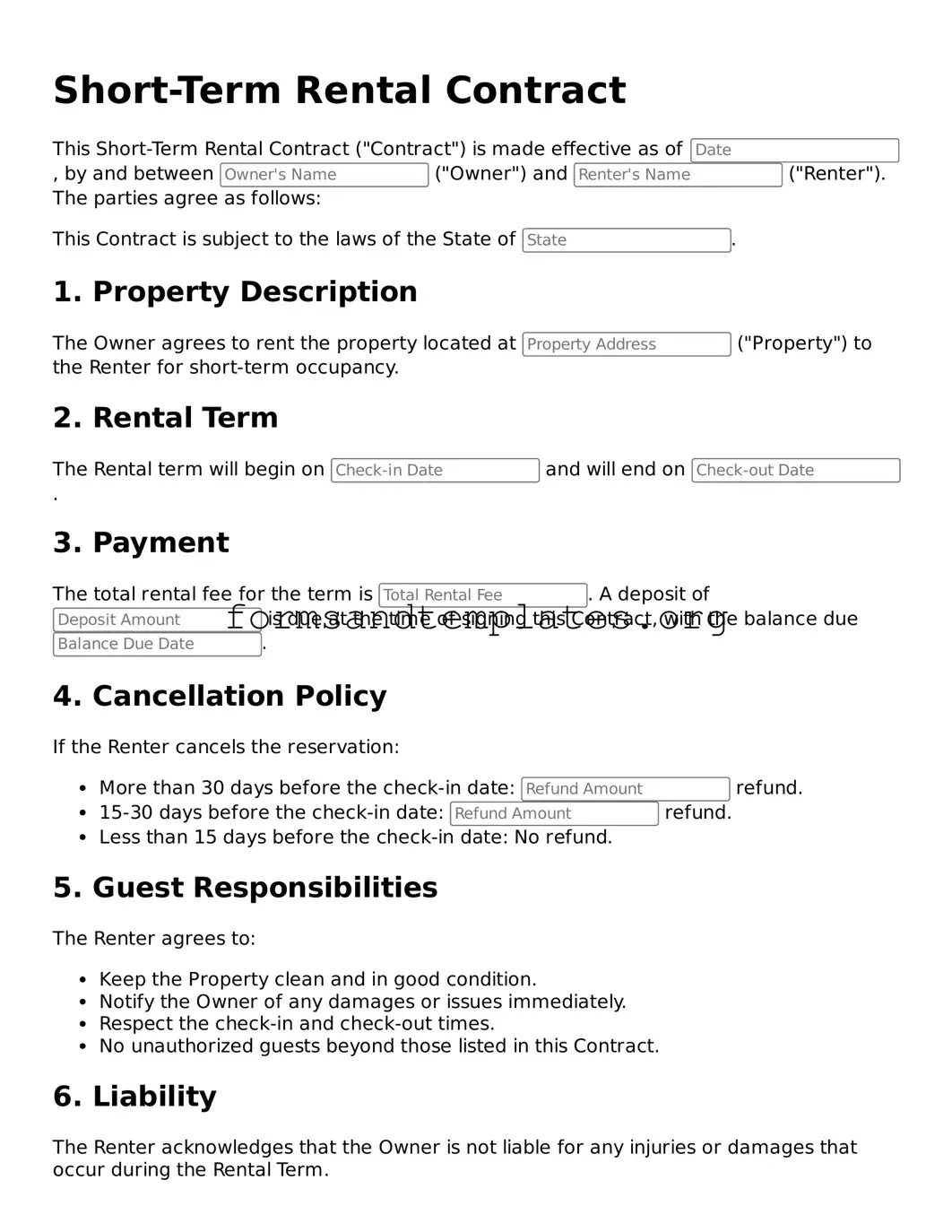Attorney-Verified Short-Term Rental Contract Template
The Short-Term Rental Contract is a legal agreement between property owners and guests, outlining the terms of rental for a limited duration. This contract helps protect the rights of both parties while ensuring clarity on expectations, responsibilities, and liabilities. For those interested in renting or offering their property, filling out this form is an essential step; click the button below to get started.
Access Editor Here
